Hannah Fake

Ospreys are our best fishers of the Sawtooths. They have a success rate that can be as high as 70% and catch a fish at least once in every four dives. Most anglers would have a hard time out-competing an osprey. We hear the ospreys every morning and evening in the late summer calling to each other before they gorge on the kokanee spawning in Fishhook Creek. Or we watch them flying with a still wiggling fish head aerodynamically held in their talons, the head first, tail behind. Now it’s winter; the lakes are frozen over and the ospreys are gone. They have headed south. Ospreys are always found near water and will find waterways in Mexico, along the coastal areas of South or Central America, or even to areas in the Amazon. Ospreys may travel more than 160,000 air miles in a lifetime through their yearly migrations! They are far away now, perhaps enjoying tropical paradise but don’t worry, they will be back in the spring to spend another summer feasting on the valley’s bountiful fish.
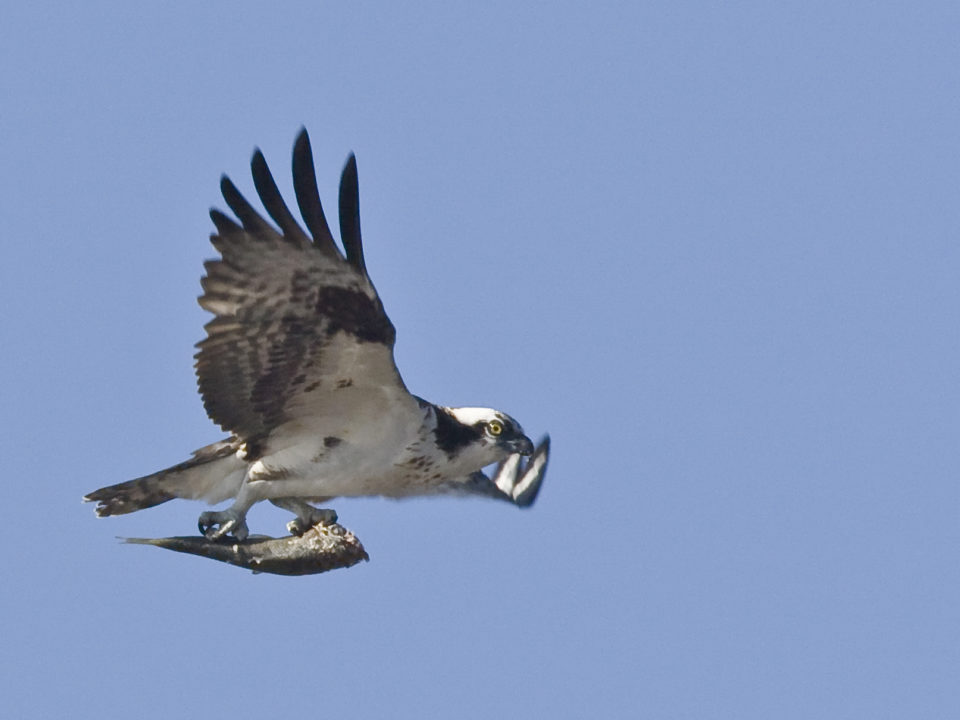
Sandhill cranes are those tall birds you see out in the meadows and on the plains mingling with the pronghorn. In the summer at the Redfish Visitor Center & Gallery, we sometimes get comments about the emus that live in the valley. However, those tall, emu-like birds are our local population of sandhill cranes. These cranes also make a migratory journey on wing to warmer weather. Most sandhill cranes migrate to areas in Texas, southern New Mexico, or northeastern Mexico. A few may winter in the warmer parts of California. Sandhill cranes have key stopover sites in Nebraska, Kansas, and Oklahoma as well as small regions in Utah and Wyoming. As these birds are coming and going you may see them in pairs, mated for life, flying overhead with necks and legs stretched out in front and behind their huge wings.

A sharp contrast in size to the osprey and sandhill crane is the western tanager. It is another one of our summer residents who migrates to warmer weather. The western tanager may be one of the brightest birds in the area. Its yellow body, black wings, and orange head on males make a striking show against the blues, greens, and grays of the Sawtooths. Western tanagers mainly eat insects during the breeding season and switch to fruits in the fall as they ripen. So when winter comes around there is little to be found for nourishment and they head south. Western tanagers winter mainly in pine-oak woods or forests in Central America where there are fruits and insects in abundance during our long winter months.
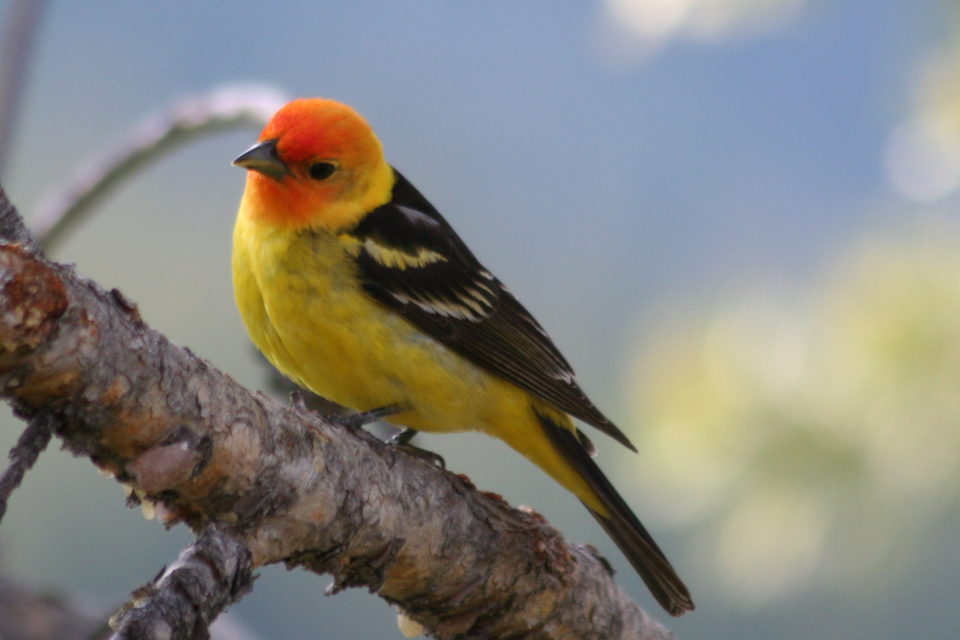
Robins may migrate or they may just stay put for the winter depending on where they are. In the Sawtooths you are highly unlikely to find robins in the winter because there will be very little bare ground. Robins may migrate long distances south or they may migrate to areas where winter is more temperate and can therefore be found year-round. If there is a cold spell, robins may head south for a little bit and return as the weather warms. A robin’s main source of food in the summer is earthworms and other insects. In the winter they tend to switch their diet to berries. Anywhere there are insects or berries that last through the winter you are likely to find robins. Robins can stand pretty cold temperatures so their main limiting factor is food!
Elk, like robins, have a variety of different migratory patterns. You may still see elk here in the Sawtooth Valley and Stanley Basin in the winter, however, many do migrate further afield. Elk spend their summers at higher elevations on the mountainsides throughout the Sawtooths and other ranges. They enjoy high mountain meadows throughout the summer. During the summer elk are mainly grazers, eating grass and other plants. In the winter they shift to browsing aspens, willows, and other shrubs and trees. As the weather turns colder in the fall the elk that stay locally come down into the valley to winter. They can be seen eking out a meager living browsing on aspens and other trees and digging beneath the snow for what vegetation is left.
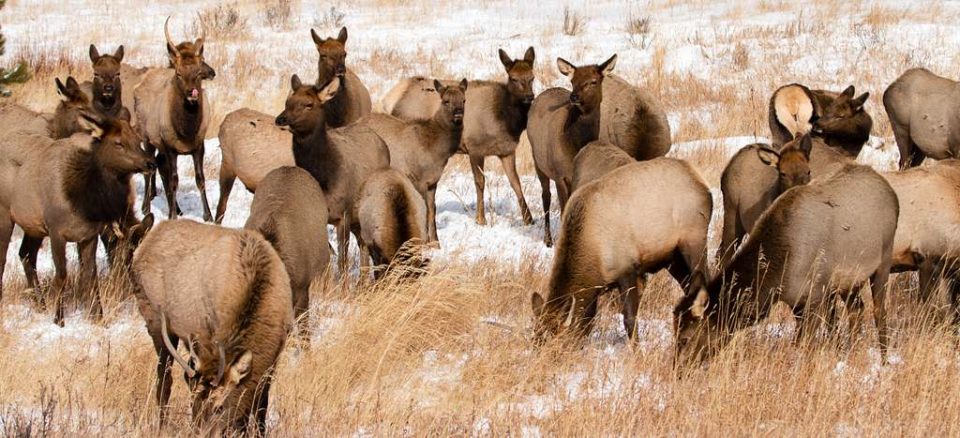
The elk that travel further afield and migrate to other locations have a variety of routes they take out of the Sawtooth Valley. Some head northwest over Banner Summit and others head towards the Middle Fork area to end up wintering near the Garden Valley area. Other herds of elk head down the Salmon River to lower elevations in the Lost River Valley. The elk that live in the Headwaters of the Salmon tend to migrate towards the Atlanta area and then beyond to lower, warmer elevations, while others turn the other direction and migrate towards the East Fork of the Salmon River and eventually to the Lost River valley as well. The elk know their way through the mountains and move with the changing weather.
Pronghorns are another ungulate found commonly throughout the Sawtooth Valley all summer long. Pronghorns may seem invincible with their incredible speed but that speed comes with a price, they are not very good jumpers. As many gardeners may know, deer and elk can jump high fences but pronghorn can not. Pronghorns are pretty good at squeezing under the fences but barbed-wires can leave cuts and scars on their back. Historically fences have proved to be a huge obstacle in pronghorn migration. Preventing their movement from summer to winter grounds and back. Development and fencing along with over-hunting led to huge declines in population numbers, but today they are recovering well. With more understanding, land owners now take down fencing during critical migration time for pronghorn or leave out the bottom wire or pole to allow pronghorn to slip underneath.
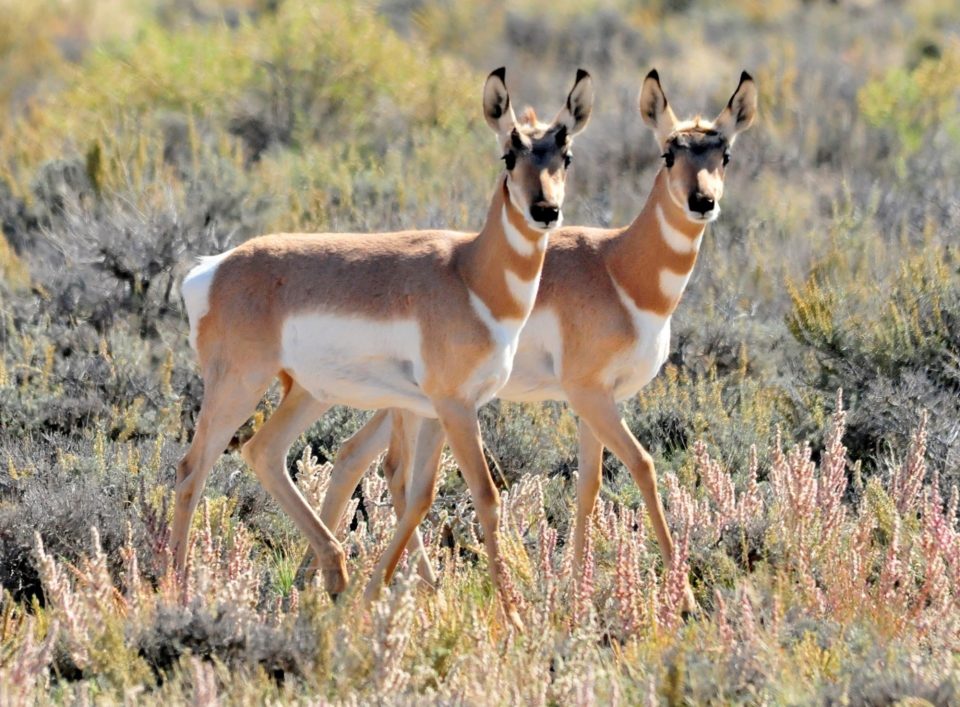
Pronghorns tend to wait until the first snows in the valley before beginning their migration to their wintering grounds. Like elk, pronghorns have several routes the herds take out of the valley. Pronghorns migrate out of the Salmon River Valley over the Horton Peak area into Germania Basin and then to the East Fork of the Salmon River to their wintering grounds in the Lost River Valley. Others take a route up Fourth of July Creek and over the saddle to Washington Lake, continuing on through the White Clouds until they too end up in the Lost River Valley. While many pronghorn avoid the woods and trees, the pronghorn of the Sawtooths will travel through the wooded Salmon River Canyon all the way down until they reach the flat, open valley near Challis. With several different routes, most of our Sawtooth pronghorn end up wintering in the Lost River Valley.
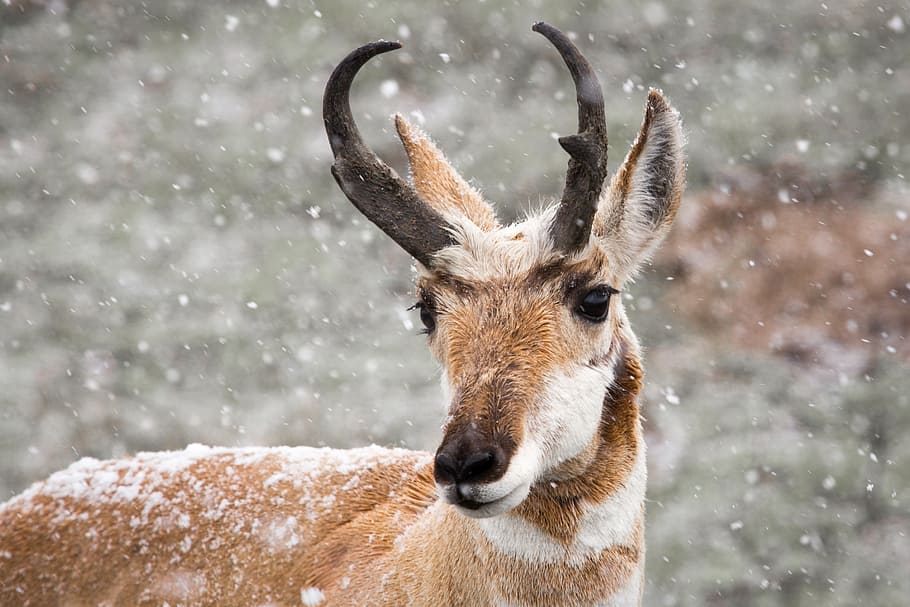
Some pronghorn have tried to survive the winter in Stanley or the Sawtooth Valley but it is just too tough for them and most become a midwinter snack for a hungry coyote. Regardless of where the pronghorn spend the winter, they spend it foraging for plants under the snow. Their thick coat of fur with hollow hairs keeps them insulated and they will have put on some extra fat for the winter like many other animals.
Whether they migrate near or far, our osprey, sandhill cranes, western tanager, robins, elk, and pronghorns have left the valley for warmer weather and more plentiful food. These Sawtooth critters make incredible journeys and although we will miss them in these long, cold months we know they will return each spring. Check back in next week to learn about or resident hibernators.
Hannah Fake was the Lead Naturalist for the Sawtooth Interpretive and Historical Association for two seasons and now works for the Forest Service in the SNRA. She spends almost all her free time roaming the mountains and valleys on the lookout for any local wildlife.
Sources:
https://www.audubon.org/news/where-do-ospreys-go-winter
https://www.allaboutbirds.org/guide/Western_Tanager/id
https://www.allaboutbirds.org/guide/Sandhill_Crane/lifehistory
Local Resident: Gary Gadwa, retired Idaho Fish and Game